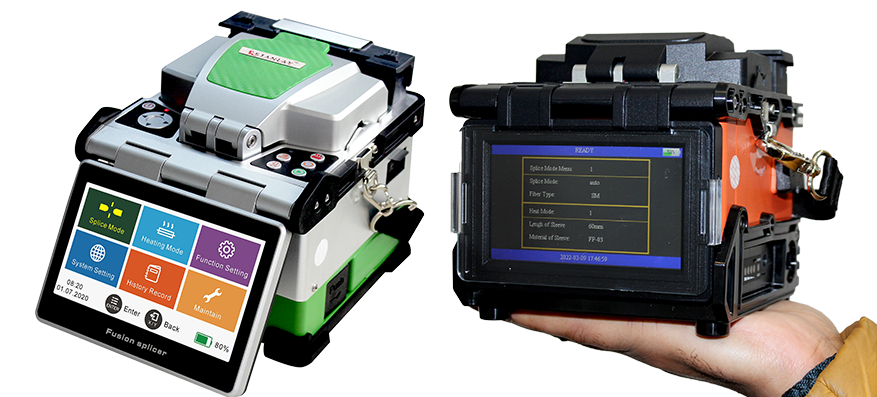All You Need to Understand About Robotic Vision and Its Applications in Advanced Optical Dimension Systems
Robotic vision stands for a significant advancement in the intersection of computer system vision, expert system, and artificial intelligence. This technology boosts the precision of optical dimension systems, enabling real-time information evaluation and enhanced quality control. Its effect extends numerous fields, from manufacturing to medical care. Nonetheless, the developing landscape of robot vision questions regarding future capabilities and applications (optical fibre diameter analyser). What innovations exist ahead in this transformative area?
Understanding Robotic Vision: Secret Concepts and Technologies
Robotic vision incorporates the innovations and techniques that make it possible for equipments to translate and comprehend aesthetic information from their setting. This area incorporates elements of computer system vision, fabricated intelligence, and machine learning to assist in automatic decision-making based on aesthetic data. Trick principles include image processing, which includes the improvement and evaluation of photos to draw out purposeful attributes, and things recognition, which permits machines to determine and classify items within a scene.

The Integration of Robotic Vision With Optical Dimension Solutions
As markets significantly demand precision and effectiveness, the assimilation of robot vision with optical measurement systems has actually arised as a transformative technique. This synergy enables robotics to perceive and translate their environments, boosting the capacity of optical measurement systems to assess and evaluate things with unequaled accuracy. By outfitting optical sensors with innovative imaging technologies, robotic vision enables real-time information collection and handling, facilitating instant modifications to dimension criteria.
Additionally, the combination equips automated systems to discover variations in dimensions, surface area quality, and positioning, which are critical in quality assurance procedures. Enhanced formulas, such as artificial intelligence, more increase this integration by improving the systems' capability to adapt to various settings and situations. The combination not just streamlines dimension procedures but additionally decreases mistakes, ensuring that items meet stringent industry requirements, therefore solidifying the role of robot vision in the future of optical measurement systems.
Applications of Robotic Vision in Production
In contemporary production environments, making use of vision systems has actually changed production procedures by enabling makers to perform jobs with remarkable precision and speed. Robotic vision systems are significantly utilized for quality control, where they inspect items for flaws and warranty adherence to requirements. These systems utilize cameras and progressed algorithms to analyze products in real-time, significantly minimizing the risk of human error.
Furthermore, robotic vision helps with automation in assembly lines, permitting robotics to accurately recognize parts and construct them with minimal downtime. This modern technology additionally enhances supply monitoring, as vision systems can keep track of supply degrees and find disparities, assuring a seamless supply chain.
Moreover, robot vision aids in the execution of smart factories, where data from vision systems can be integrated with other innovations to maximize operations. Generally, the applications of robotic vision in manufacturing show its crucial duty in boosting efficiency, top quality, and performance across different fields
Robotic Vision in Healthcare: Revolutionizing Person Care

In recovery, robotic vision help in checking client progress and tailoring treatment sessions to private demands. It supports clinical professionals by automating tasks such as data collection and person tracking, permitting even more time to concentrate on straight individual communication. Additionally, robotic vision boosts telemedicine by allowing remote medical diagnosis and online examinations, bridging the space between patients and doctor. Generally, the application of robot vision in medical care is transforming individual care, bring about enhanced outcomes, performance, and client complete satisfaction.
Future Patterns and Growths in Robotic Vision Technology
The quick evolution of robotic vision modern technology assures to better improve its applications throughout various fields, consisting of healthcare. Future fads show a considerable change in the direction of integrating fabricated intelligence and artificial intelligence, making it possible for systems to pick up from huge datasets and improve precision over time. Enhanced sensing unit innovations and deep discovering algorithms are anticipated to fine-tune object recognition capacities, allowing robots to translate go to this web-site complicated atmospheres better.

The assimilation of augmented reality (AR) with robot vision will likely reinvent how robotics assist in medical treatments and diagnostics. This synergy will assist in real-time data visualization, improving decision-making processes. In addition, miniaturization of elements will lead to even more small and functional robot vision systems ideal for a selection of tasks. As these advancements unravel, industries will certainly witness enhanced automation and performance, solidifying robotic vision as a foundation of innovative technological solutions.
Frequently Asked Concerns
What Are the Main Parts of a Robotic Vision System?
The major components of a robotic vision system consist of electronic cameras for picture capture, processors for information evaluation, formulas for analysis, and actuators for motion. Together, these elements enable robots to regard and communicate with their atmosphere efficiently.
Just How Does Robotic Vision Improve Accuracy in Measurements?
Robotic vision boosts measurement accuracy by utilizing sophisticated imaging modern technologies, making it possible for precise item detection and spatial evaluation. This capability lowers human error, boosts repeatability, and enables for real-time modifications, inevitably boosting total dimension dependability and effectiveness.
What Industries Benefit A Lot Of From Robotic Vision Innovation?
Different sectors benefit greatly from robot vision modern technology, including production, health care, farming, and logistics. These markets utilize boosted precision, efficiency, and automation, resulting in enhanced efficiency and decreased functional costs in their particular procedures.
Can Robotic Vision Systems Operate In Low-Light Issues?
Robotic vision systems can without a doubt function in low-light conditions, making use of advanced sensors and algorithms to enhance photo clearness. This capacity allows them to do effectively in various atmospheres, including industrial and surveillance applications, even with minimal lighting.
What Are the Expenses Connected With Implementing Robotic Vision?
The prices connected with applying robotic vision differ significantly, affected by parts such as cameras, software, and integration. Added expenses consist of upkeep, training personnel, and potential upgrades to existing systems, which can gather Continue with time.